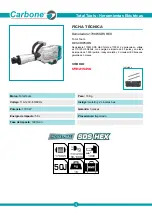
Disassembly
SHOCK HAZARD Only qualified, service-trained personnel who are aware of the
hazards involved should remove instrument covers. Always disconnect the power
cable and any external circuits before removing the instrument cover. Some circuits
are active and have power for a short time even when the power switch is turned off.
Electrostatic Discharge (ESD) Precautions
Almost all electrical components can be damaged by electrostatic discharge (ESD) during handling.
Component damage can occur at electrostatic discharge voltages as low as 50 V.
The following guidelines will help prevent ESD damage during service operations:
l
Disassemble instruments only in a static-free work area.
l
Use a conductive work area to reduce static charges.
l
Use a conductive wrist strap to reduce static charge accumulation.
l
Minimize handling.
l
Keep replacement parts in original static-free packaging.
l
Remove all plastic, foam, vinyl, paper, and other static-generating materials from the immediate
work area.
Tools Required
l
T10 Torx driver for cover and board disassembly
l
T8 Torx driver for P600 disassembly
l
Small flat bladed screwdriver for battery removal
Cover Disassembly
1. Turn off the power. Remove all cables from the instrument.
2. Remove the 7 flat-head screws located on the top, the 10 flat-head screws along the sides, and
the 3 pan-head screws on the back (see figure below). Place the screws in a container so that you
do not lose them.
3. Remove the instrument cover.
7 Service and Maintenance
296
Keysight RP7900 Series Operating and Service Guide
Summary of Contents for RP7900 Series
Page 1: ...Keysight Regenerative Power System RP7900 Series Operating and Service Guide ...
Page 2: ......
Page 100: ......
Page 262: ......
Page 314: ......
















































